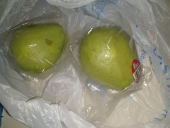




 4
4








Argue for your limitations and they are yours forever.
 4
4




Gardens in my mind never need water
Castles in the air never have a wet basement
Well made buildings are fractal -- equally intelligent design at every level of detail.
Bright sparks remind others that they too can dance
What I am looking for is looking for me too!

Lance Hill, who posts below, says the type of chayote we are saying to get will not work in the US. Keep reading if you want to grow them, this turns out to be a more complex question than we all expected.

 5
5




List of Bryant RedHawk's Epic Soil Series Threads We love visitors, that's why we live in a secluded cabin deep in the woods. "Buzzard's Roost (Asnikiye Heca) Farm." Promoting permaculture to save our planet.








 1
1




 5
5




It's never too late to start! I retired to homestead on the slopes of Mauna Loa, an active volcano. I relate snippets of my endeavor on my blog : www.kaufarmer.blogspot.com
 2
2




 1
1




Lance Hill wrote:I am sorry, the endangered variety of mirliton is the only one that grows in North America: the Louisiana heirloom variety which has been grown here for 150 years. The imported "Chayote", which are sold at stores and mercados, are primarily grown in Costa Rica at nearly 5,000 feet. I envy your climate with 2300 feet altitude and only 60 inches of rainfall, but to grow at a few feet above sea level and with nearly 100 inches of rainfall annually, it takes specialization. In Australia, the Philippines, and other areas, Chayote is virtually an invasive species. This is covered in the free grower's guides at www.mirliton.org.
Lance
Mirliton.Org

Gardens in my mind never need water
Castles in the air never have a wet basement
Well made buildings are fractal -- equally intelligent design at every level of detail.
Bright sparks remind others that they too can dance
What I am looking for is looking for me too!







 1
1




It's never too late to start! I retired to homestead on the slopes of Mauna Loa, an active volcano. I relate snippets of my endeavor on my blog : www.kaufarmer.blogspot.com
 1
1




 2
2




"Do the best you can in the place where you are, and be kind." - Scott Nearing
 1
1








 1
1




"Do the best you can in the place where you are, and be kind." - Scott Nearing






 1
1




It's never too late to start! I retired to homestead on the slopes of Mauna Loa, an active volcano. I relate snippets of my endeavor on my blog : www.kaufarmer.blogspot.com




Standing on the shoulders of giants. Giants with dirt under their nails








Standing on the shoulders of giants. Giants with dirt under their nails




 1
1




Standing on the shoulders of giants. Giants with dirt under their nails
 1
1




Standing on the shoulders of giants. Giants with dirt under their nails

| I agree. Here's the link: http://stoves2.com |







